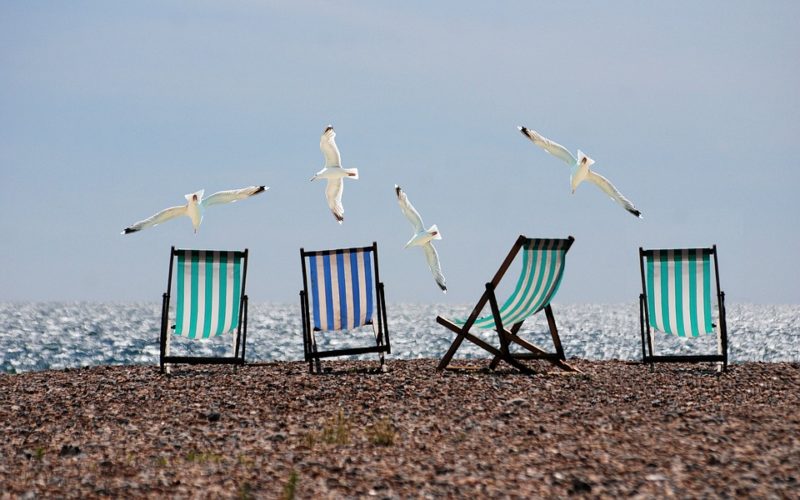
Nothing says summer like planning and packing—and heading out the front door for an all-American adventure. You don’t need a surplus of time or money, just the conviction to finally make it happen this year. There is no shortage of enticements across the United States, from shore to shimmering shore.
Whether you make it an affair to remember with a spouse or budding love interest, or go on a meditative retreat or solo road trip, here are five destinations in our back-yard that are guaranteed to start the summer off right.
Block Island is often overlooked, except by New Englanders, who love it dearly, while Colonial Williamsburg in Virginia is an opportune place to immerse yourself (and maybe the kids) in late-18th century history. Most will agree that Idaho’s Middle Fork of the Salmon River might well be America’s premier white-water destination, and Door County promises the quintessential Midwestern lake-side vacation. Or join the exodus of Seattleites who head out to the sunny San Juan Islands by sea-plane or ferry—and once there rent a bike or canoe, making for the perfect stay.
1. Block Island, Rhode Island
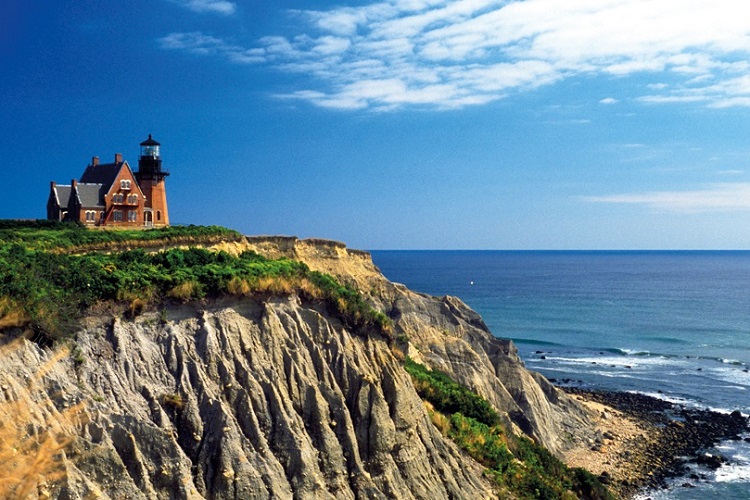
In winter, Block Island is a cold, windswept place, home to only about 1,000 hearty souls who hunker down and enjoy the solitude—which disappears almost entirely in summer, when up to 20,000 tourists arrive each weekend. But who can blame them for coming? This is, after all, a place the Nature Conservancy has named one of its “Last Great Places,” an 11-square-mile gem that manages to contain 365 freshwater ponds, rolling green hills, and dramatic 230-foot bluffs that look as if they belong in Ireland.
Historic sites are conspicuously absent because Block Island has done a fair job of sidestepping history altogether. When Europeans first arrived in the early 17th century, it was inhabited by the Narragansett Indians, whose name for the island was Manisses, or “Island of the Little God.” After the first English settlements were established in 1661, not much happened on the island for the next 200 years. Tourists began arriving in the 1850s (leading to a mini-boom in the construction of huge Victorian homes and hotels) and continued through the years of Prohibition, when the island, like the rest of Rhode Island, was a hotbed of rum-running and speakeasies.
Today, despite the island’s popularity with sophisticated New Englanders, it still manages to stay free of Martha’s Vineyard–style social fuss. Its residents—and its visitors—tend to be quiet, active, and protective of the natural beauty around them. Today, nearly half of the island is set aside as conserved open space, and 32 miles of hiking trails and gorgeous cliffside paths allow for motor-free sightseeing. The 3-mile Clay Head Trail skirts the island’s northwest coast from Clay Head Bluffs to Settler’s Rock, a stone memorial commemorating the first settlers from the Massachusetts Bay Colony. Situated on the Atlantic flyway, it’s a favorite of bird-watchers during the fall migrations, when flocks representing more than 100 different species pass through. Down at the waterline, the island is ringed by some 17 miles of beach, while the Great Salt Pond on its western side serves as a protected harbor for hundreds of pleasure boats.
2. Colonial Williamsburg, Virginia
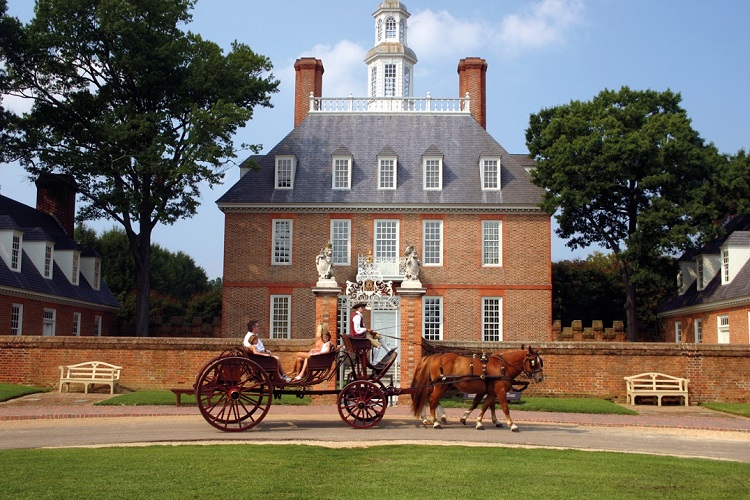
Colonial Williamsburg meticulously re-creates the crucial period of 1750 to 1775, the end of the colonial era and the anxious eve of the Revolutionary War. The level of detail is astonishing, from the actors who portray Revolutionary-era statesmen, blacksmiths, wig makers, and slaves to the flocks of squawking ducks and grazing sheep. It’s the country’s largest and most popular living history museum and one of the world’s finest.
The cultural and political capital of Virginia from 1699 to 1780, Williamsburg was home to government buildings and a lively social scene among the colonial aristocracy. Thomas Jefferson and George Washington both spent time here debating the merits of forming an independent country. In 1926, John D. Rockefeller Jr. initiated a top-to-bottom $68 million restoration in which 88 original buildings and 500 other structures were restored or rebuilt, along with 90 acres of gardens and public greens. Today, it’s impossible to tell which of the buildings were restored and which were totally reconstructed on their original foundations.
Williamsburg is a treat for both adults and kids. Walking the cobbled streets of the Historic Area, you might find yourself having an impromptu discussion with “Thomas Jefferson,” “Martha Washington,” or one of the wide cast of townspeople going about their daily lives. You can attend the trial of a pig thief; watch a gunsmith craft a flintlock rifle; sign up for a candlelit tour of the city’s haunted spots; or view a performance by the town’s parading fife-and-drum corps. Tour the Georgian-style Governor’s Palace with its extensive topiary gardens and holly maze, the H-shaped Capitol, the Courthouse of 1770 with its pillories and stocks out front, and the George Wythe House, home to Thomas Jefferson in 1776, when he was a Virginia General Assembly delegate. Stop for a tipple at any of the four historic taverns offering colonial dishes in period settings.
3. Middle Fork of the Salmon River, Idaho
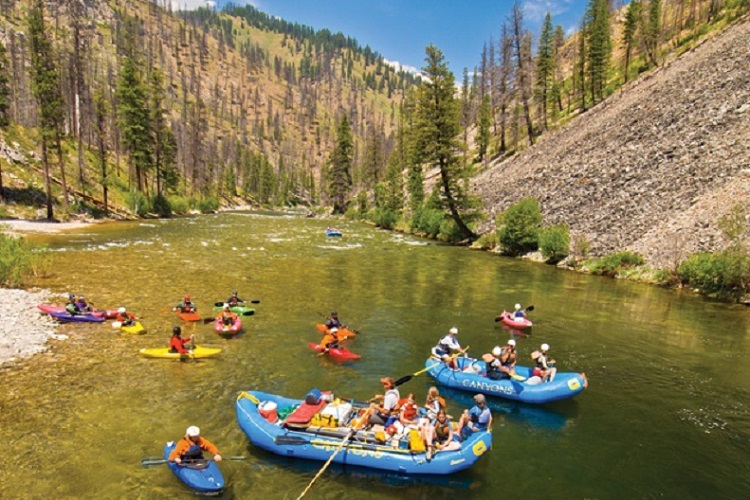
Idaho has 3,100 white-water miles—more rushing water than any other state in the continental U.S.—and the very best for a rafting adventure is the Middle Fork of the Salmon River. Many outdoor enthusiasts consider it one of the top white-water rivers in the world.
The Middle Fork carves a mighty canyon through central Idaho’s 2.36-million-acre Frank Church River of No Return Wilderness, the largest federally protected forest wilderness in the lower 48. The river drops some 3,000 feet in 100 miles, churning through 100 deep-rolling Class III and IV rapids. It carries you through spectacular forest and rocky gorges (should you have a moment to acknowledge your surroundings), and past sandy beaches for overnight camping and natural hot springs for soaking paddle-weary bones (one spring, called the Sunflower, spills over a rock to form a riverside hot shower). Sightings of bears, river otters, Rocky Mountain bighorn sheep, elk, and large birds of prey are common, and rafters can also sneak in some superb fishing—Idaho’s acclaimed crystal clear waters are rich with rainbow, cutthroat, and Dolly Varden trout. Watch the canyon walls for vivid rock art, inscribed by the ancient Tukudeka people, who once claimed these wild canyons as their homeland.
4. Door County, Wisconsin
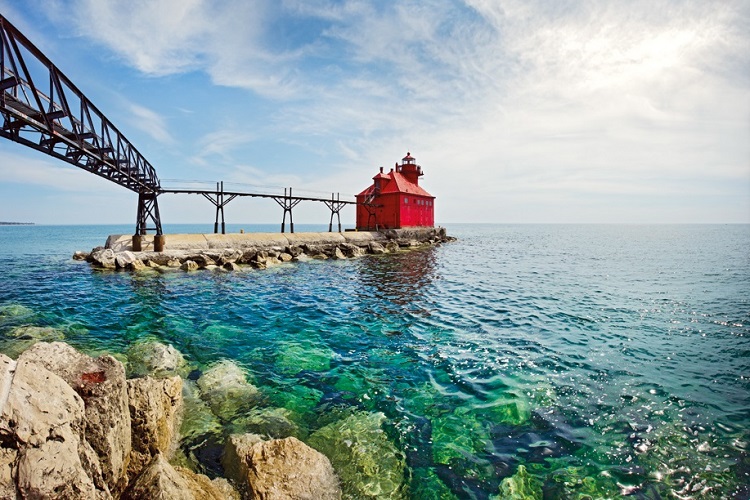
Door County occupies most of the 75-mile long Door Peninsula, which thrusts like a sword from Wisconsin’s northeast corner into Lake Michigan. To the west lie the sheltered waters of Green Bay; to the east, the vast blue expanse of the open lake; and in between are Door County’s 300-plus miles of ragged shoreline, dotted with 11 lighthouses, busy marinas, and quiet beaches. No matter where you wander, you’re always less than 10 miles from water’s edge. Drive the two-lane highways that connect the whitewashed waterfront towns: Egg Harbor, Fish Creek, Ephraim, and Sister Bay entice visitors with endless shops, galleries, restaurants, and streets made for strolling. Inland, cherry and apple orchards crosshatch the rural landscape, along with antiques shops, summer stock theater, and other surprises.
Explore Door County’s natural wonders at Peninsula State Park, a 3,776-acre limestone headland that juts out into the bay between Fish Creek and Ephraim. Nearby, volunteers give tours of the Eagle Bluff lighthouse, a buttery brick tower built in 1868.
You’ll find greater solitude when you venture to Door County’s “lake side” or its northern reaches, where low-key resorts lie hidden along sand beaches and rocky bays. You won’t reach the end of the county until you’ve hopped a ferry across the Portes des Mortes Passage (“Death’s Door”) to Washington Island, then another to Rock Island State Park. Here, ringed by a horizon of water and woods, you can fully appreciate the landscape that has been luring vacationers for decades.
5. San Juan Islands, Washington
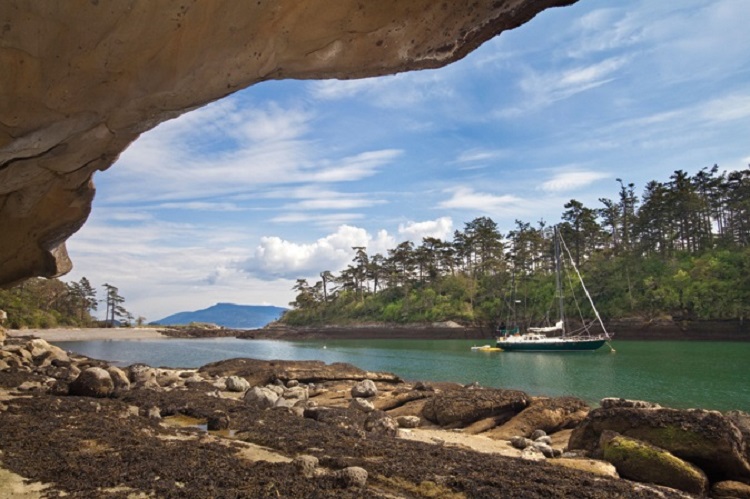
In the northwest corner of Washington State, the waters of Puget Sound, the Strait of Georgia, and the Strait of Juan de Fuca mingle, forming the Salish Sea, home to the forested, rock-faced San Juan Islands, whose landscapes range from tightly folded mountain peaks to rolling moors and farmland. Although the San Juan archipelago contains more than 750 islands scattered across 10,000 square miles of Pacific waters, only 170 are named, only about 40 are inhabited, and only four are served by Washington State Ferries.
Despite their proximity to Seattle, the islands have significantly better weather (due to the Olympic Mountains’ rain shadow) and have remained relatively undeveloped, retaining their bucolic charm. Three have plentiful inns, resorts, and facilities, and each has its own distinct character.
Lopez Island is the most rural, with fields and pastures stretching across its central plateau. With few hills and friendly drivers—it’s one of those places where everyone waves hello to one another—Lopez is a great island to explore on two wheels. Many consider Orcas Island the most beautiful. It is the largest, rockiest, and most mountainous, nearly divided into halves by the intruding waters of East Sound. From the top of 2,409-foot Mount Constitution in rugged Moran State Park, the views stretch from Mount Rainier in the south to Mount Baker and north to Vancouver in British Columbia.
San Juan Island is the second largest of the islands, the most distant from the mainland, and the only one boasting an incorporated town, Friday Harbor. A bustling port, with ferries, sailboats, and cruisers to-ing and fro-ing, it’s also the center for kayak trips—the San Juans are noted worldwide for excellent sea kayaking— and for whale-watching. Three resident pods of orcas, one of the highest concentrations anywhere, call these chilly waters home—Free Willy was filmed in the San Juans—as do seals and porpoises. Learn more about the San Juan marine ecosystem at the Whale Museum, a one-of-a-kind facility that helps support local whale research.
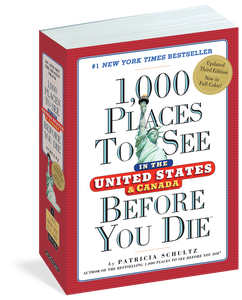 About the Book:
About the Book:
Covering the U.S.A. and Canada like never before, and for the first time with full-color photographs, here are 1,000 compelling, essential, offbeat, utterly unforgettable places. Pristine beaches and national parks, world-class museums and the Just for Laughs festival, mountain resorts, salmon-rich rivers, scenic byways, the Oyster Bar and the country’s best taco, lush gardens and coastal treks at Point Reyes, rafting the Upper Gauley (if you dare). Plus resorts, vineyards, hot springs, classic ballparks, the Talladega Speedway, and more. Includes new attractions, like Miami’s Pérez Art Museum and Manhattan’s High Line, plus more than 150 places of special interest to families. And, for every entry, what you need to know about how and when to visit.
“Patricia Schultz unearths the hidden gems in our North American backyard. Don’t even think about packing your bag and sightseeing without it.” —New York Daily News
Buy the Book
Amazon | B&N | Indiebound | Workman

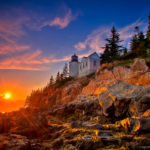
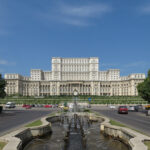
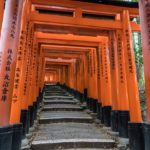
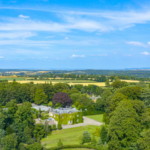
No Comments